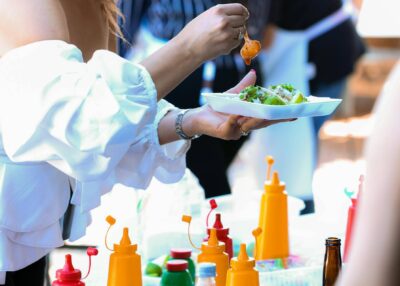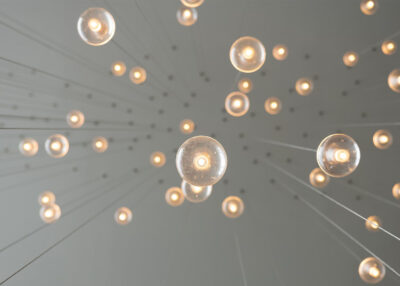7 Event Design Ideas That Are Covid Friendly
As food and entertainment joints globally reopen for full-capacity operations, we cannot overlook the resulting threat of increased exposure to COVID-19. Operators and event organizers are faced with the challenge of abiding by the social distancing guidelines to avoid putting their clients at the risk of catching COVID-19.
Here are seven clever event design ideas that are COVID friendly:
1. Glass barriers with designs on them (branding)
Although glass barriers have been extensively used in the health and food sectors for a long time, their increased use in events is distinct from the other applications.
They are a nifty way to prevent unnecessary contact without infringing on your attendees’ personal spaces and making them feel limited.
In events, they serve four primary purposes:
-
Intercepting respiratory droplets that may transmit the COVID-19 virus
-
Reinforcing physical distancing regulations, especially where audiences are forgetful or intentionally violating these requirements
-
Allowing the event’s attendees to take part in other activities like eating and singing along without masks
-
Helping audiences avoid over-reliance on masks which sometimes face a shortage or feel obtrusive and uncomfortable wearing for a long time
- Separation of rooms. Assists in floor plans.
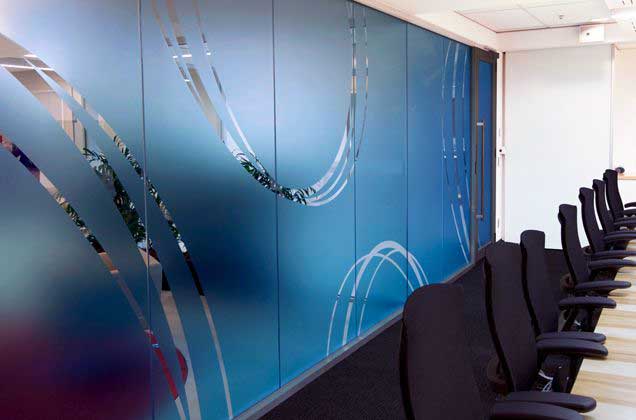 If you’ve installed the glass barrier to limit overreliance on masks, design it in a manner that prevents any physical contacts or co-mingling of respiratory droplets.
If you’ve installed the glass barrier to limit overreliance on masks, design it in a manner that prevents any physical contacts or co-mingling of respiratory droplets.
Therefore, its dimensions should be more than the users’ breathing zones, whether seated or standing. The barrier’s height should consider the tallest person in either of the partitions, while the width should consider the possibility of users blatantly trying to reach the opposite side.
You can include a hole or small opening to facilitate necessary interactions, like sharing documents. Glass barriers also allow you to market your company or event. Besides the reminders to abide by COVID-19 regulations, you can also put stickers or engravings promoting your brand on the barrier.
2. Pods or seating domes
Traditional events setups comprise rows and columns of fixed seats, which increase the chances of physical contact and the possibility of exchanging respiratory droplets between attendees.
Pods seating arrangement involves having barriers, like tables separating users and reinforcing physical distancing.
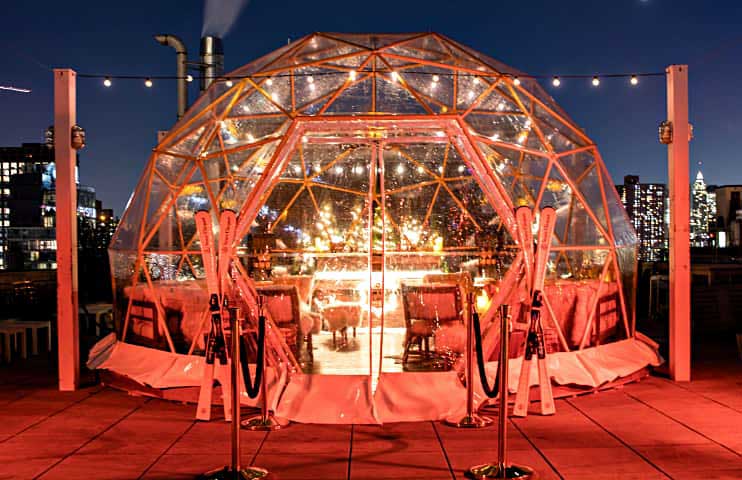 If your event is not that big, you can use seating domes.
If your event is not that big, you can use seating domes.
As the name suggests, it involves having seats covered by transparent dome-shaped structures. Users enter those domes and savor the event from within.
Besides preventing physical interactions, domes also make it easy to carry out contact tracing if one of your attendees tests positive. All you have to do is to track those who are with them in the domes. The challenge with seating domes is that sometimes they overheat or get too cold and uncomfortable.
Proper ventilation and heaters can help solve this issue.
3. Larger venues
In the COVID-19 era and beyond, organizers must begin thinking of acquiring larger venues. The bigger the space, the easier it is for audiences to maintain social distancing.
Instead of using typical restaurant setups with tables and chairs that limit physical distancing, you can opt for warehouses or open floor plans that guarantee more space.
Better still, you use outdoor venues or high roofs.
4. Space dividers
The other option is to divide people on the floor using physical barriers.
A common way is mapping out individual user’s spaces and erecting things like booths, simple rope compartments and walls. Unlike glass barriers, dividers may look a little limiting and intrusive.
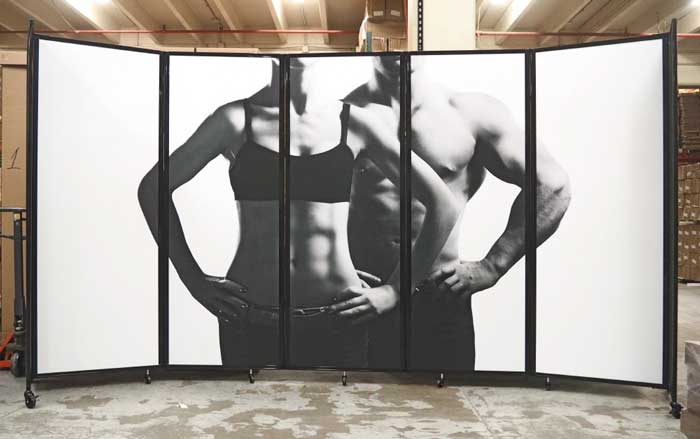 For a live event experience, keep the dividers’ heights a little lower than glass barriers. That’s because if they are too high, users won’t be able to see each other. Like in glass barriers, you can stick advertising material on the dividers’ to promote your company or upcoming events.
For a live event experience, keep the dividers’ heights a little lower than glass barriers. That’s because if they are too high, users won’t be able to see each other. Like in glass barriers, you can stick advertising material on the dividers’ to promote your company or upcoming events.
For events where people make reservations, you can use the barriers to pool together related people, such as family members.
Doing so can come in handy if you need to trace specific contacts.
5. Multiple entry points
Depending on how big your event is, you might also want to have multiple entry points. The aim is to prevent overcrowding at any point by distributing the traffic to several entrances.
At each of these entrances, maintain well-organized lines with attendees standing at least six feet apart. The other tactic to avoid crowding at entry points is opening gates early enough. That gives audiences ample time to enter the venue instead of scrambling last-minute when the event is almost beginning.
6. Virtual interactive displays
One of the most common ways of catching COVID-19 is through touching contaminated surfaces and then touching your eyes, mouth, nose, or any other semipermeable membrane.
Virtual Interactive Displays help prevent the unnecessary touching of surfaces that may have the virus.
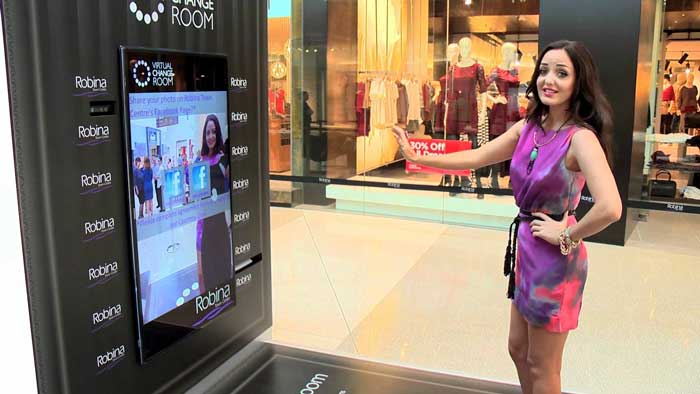 One area where this has been used extensively is the automatic opening and closing of doors.
One area where this has been used extensively is the automatic opening and closing of doors.
Doors are now fitted with motion detectors or sensors that automatically open them when you approach or scan your ticket. Instead of filling the event with physical tellers, you can have interactive displays that guide users intuitively. Better still, you can have your staff guiding the users virtually using these displays from remote locations.
7. Floor designs for social distancing
Another common tactic is printing designs on the floor that guide users on maintaining social distance. Some common examples include:
-
Checked and unchecked boxes to designate where to stand or not
-
Arrows showing six feet margins
-
Drawings of feet to guide users on where to stand
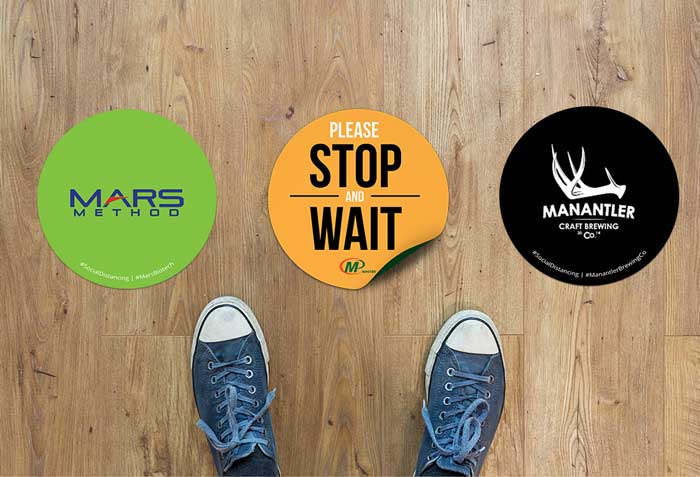 As is with most of the above event design ideas, floor designs also provide a perfect opportunity to promote your brand.
As is with most of the above event design ideas, floor designs also provide a perfect opportunity to promote your brand.
Whether you decide to go with the checked boxes, arrows, or drawings of feet, you can use these spaces for marketing your company or events.





